It’s hard to believe that beavers, the largest rodents in North America, were once on the brink of extinction after mountain men traversed across our undeveloped nation in search of new land and beaver pelts to send back to Europe for felt hats. Today, through conservation efforts and state management plans, beavers have rebounded to stable populations—and they’ve been stable in most places for decades.
Healthy populations present great opportunities for beaver trapping. For folks looking to get in on the fun of trapping, or who need to manage beavers on their property, we’ve compiled a beginner’s guide on how to trap beavers. We’ll cover:
- Beaver management & the beaver’s role in ecosystems
- Finding beaver sign
- Beaver trapping gear & traps
- Making sets
- What to do with harvested beavers
Understanding Beaver Management
Beavers have a very important role in our ecosystem. Namely, they create wetland habitat which benefits aquatic species and waterfowl. They promote woody browse regeneration and bedding areas for deer. Beavers are natural prey species for many predators. They can beneficially lower water levels downstream of their dam.
If left unmanaged, however, beaver populations can soar and cause quite a bit of damage. They can plug culverts, which can flood roads and interfere with aquatic species migrations. Beavers can also block access to lands or roads, destroy trees, flood crops, and deteriorate infrastructure. Trapping is the most efficient and effective method to control and manage furbearer populations, and that’s especially true with beavers. Many people will try to control beaver populations by destroying the lodge or dam, only to see those structures rebuilt overnight. (Beavers are incredibly crafty engineers.) Removing problem beavers from the landscape is the best way to prevent damage, but I want to add a special note: Beavers do not need to be harvested if they are not causing any problems.
Trapping on Land vs. Trapping In the Water
When approached to write this article, I immediately hesitated because while I do quite a bit of beaver and otter trapping, I personally never set foot in the water. Through years of having small children, limited time to check traps, and a slight fear of deep murky water, I have developed my own methods of water trapping that do not require me to ever enter the water. But setting traps in the water can be very effective. So, for this story, I’m collaborating with a very good friend who has trapped in several northern states, and will be able to contribute tips on trapping in big water and under ice. I hope that you will find value in learning about both methods of beaver trapping.
Finding Beaver Sign
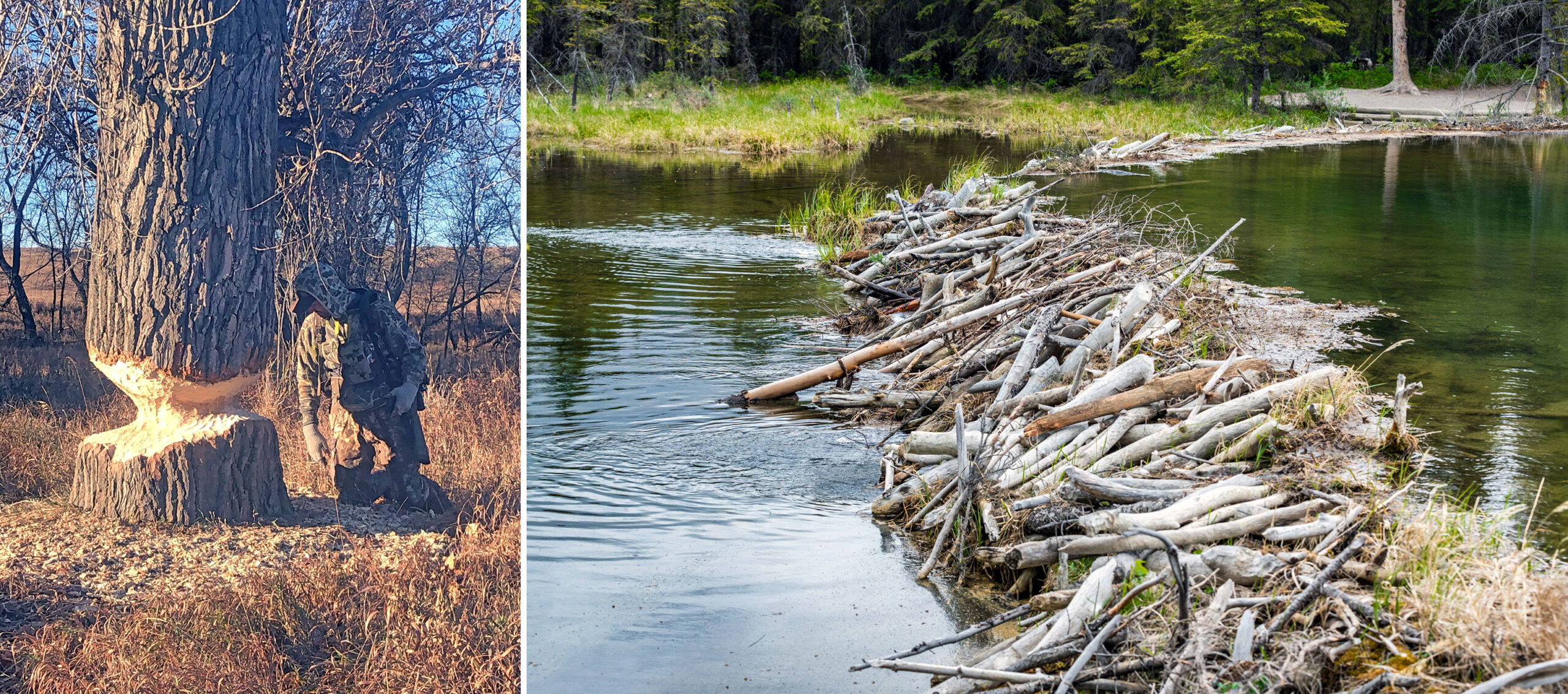
Prior to setting a trap, you’ll need to find areas where beavers are active. The best way to do this is by learning how to read beaver sign. Most people are able to identify fresh chewings of wood chips and downed trees in the woods. Beaver lodges and dams are another way of locating fresh sign, but keep in mind that both of these can remain visible for many years even after beavers have left the area. Make sure that dams have fresh sign around them and that lodges are active.
To be clear, lodges are where the beavers live, and they’re usually located in the middle of deep water away from predators. A beaver lodge looks like a giant, dome-shaped teepee made from sticks and mud. Dams are the linear piles of sticks, rocks, and mud that beavers build to stop flowing water in order to create a pond around their lodge. Beaver dams also serve as food sources. Beavers will often chew on the trees that form the dam, and they can always retreat to the water if a predator approaches.
In the spring, beavers will also leave breeding signs in the form of castor mounds, which look like little hills of fresh mud along the waterline. They use their tail to slather castor onto these mounds, similar to how a deer works a scrape during the rut. Other signs include peeled green branches and beaver scat floating in the water.
Beaver Trapping Gear
Once you’ve located fresh beaver sign and have enough locations to make sets, you can now assess what trapping gear you need to buy. Water trapping gear is a lot like fishing gear: There are many items you think you need, but you can realistically achieve the same results with minimal gear. Not every piece of gear we’ll mention is required to trap successfully, but they will make the experience easier.
There are several clothing items, for example, that would be helpful when setting traps in the water. Chest waders made of 5mm neoprene (or heavier) are recommended for those who plan to get into the water, especially in cold weather. Insulated gauntlets are long gloves that go all the way up your arm, and they’ll allow you to set traps in cold water without getting your sleeves wet. Gauntlets aren’t as necessary if you’re trapping in warm weather and wearing short sleeves.
Beaver Traps
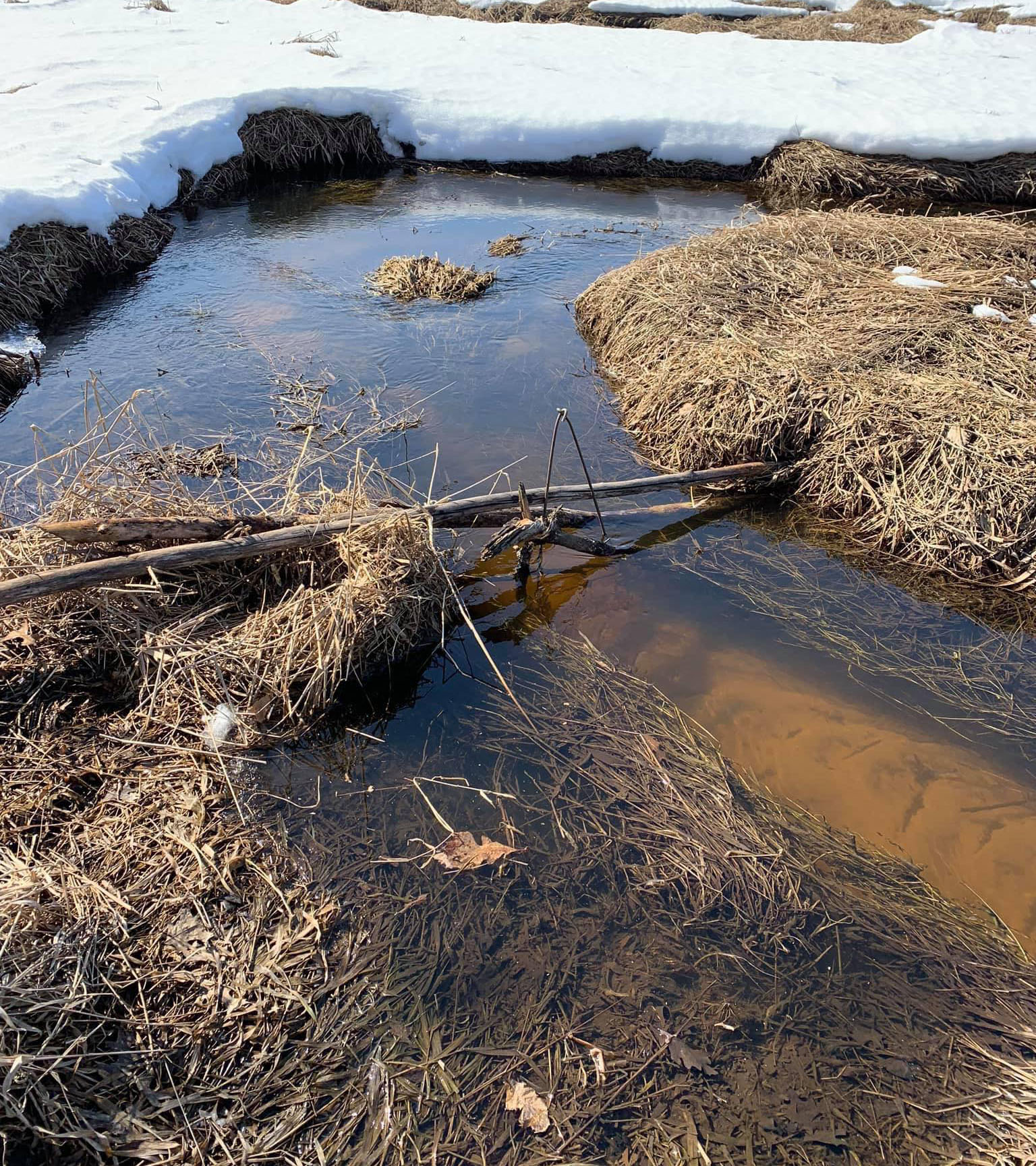
Skye Goode
The type of trap you choose to set will vary depending on the body of water you are trapping around and the regulations in your state. We highly recommended that you complete a trapper education course if one is offered in your area, or join your local trapping association to get advice from experienced trappers. Beaver trapping regulations are complex and they vary widely from state to state.
Body Grip Beaver Traps
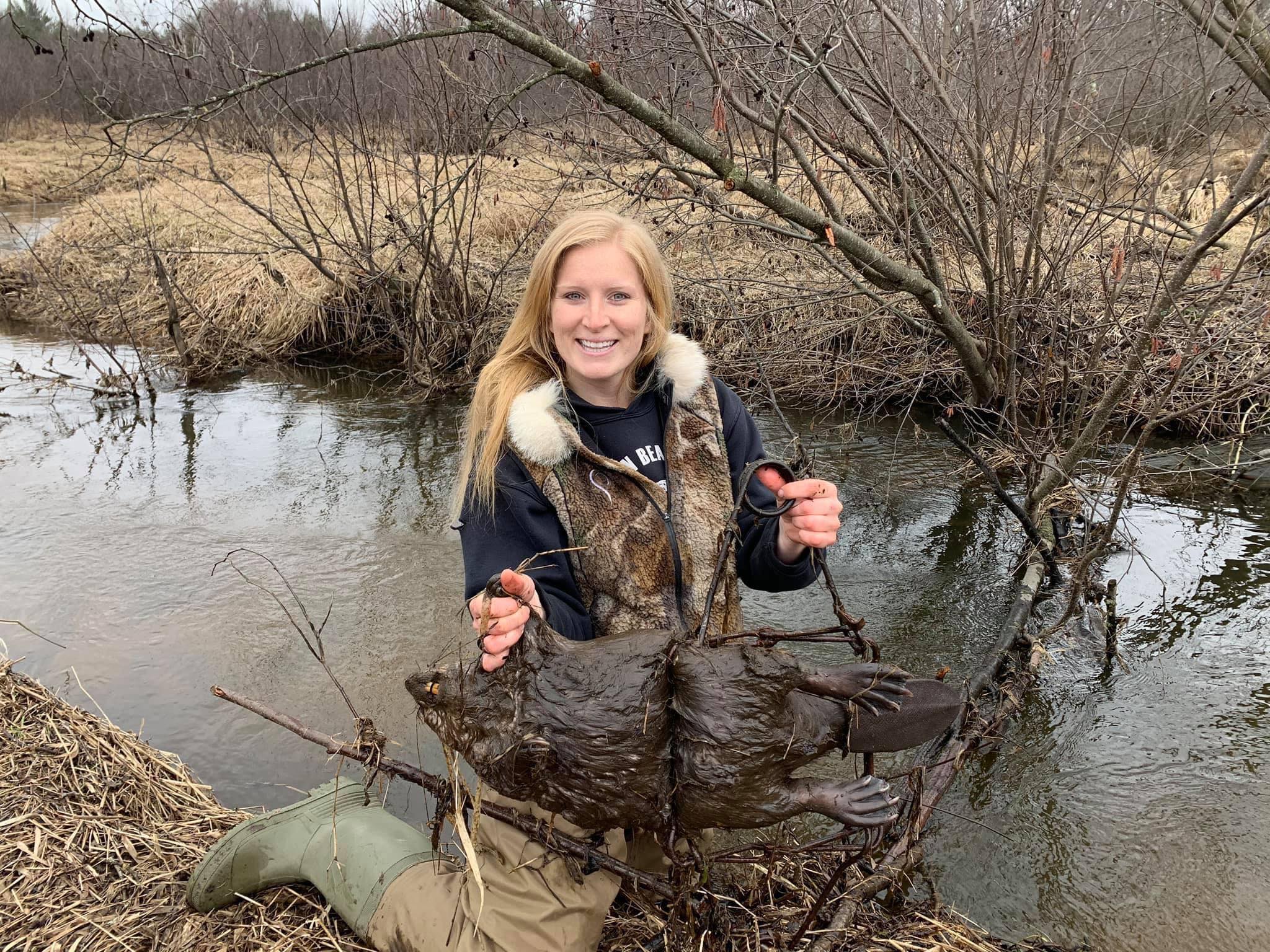
A body grip trap size 330 is the most common and effective trap used for beaver. Body grip traps should be fully submerged under the water. In nearly every state, setting a trap that size on dry land is illegal due to its strong killing power. Safety should be a priority for trappers when setting 330s. You could accidentally catch a finger or hand in the trap, which gets even more dangerous in icy, cold conditions. Body grip traps require a setting tool to compress the springs, as they are too strong to set over and over again by hand. Trappers should also consider purchasing an additional body grip safety, which can help eliminate the risk of injury during the setting process. This tool attaches to the jaws until the trapper has the trap completely finished, at which time he or she can remove the safety.
Body grip traps will require a stabilizer of some sort, and there are many options on the market, from brackets to H-stands. Two dead sticks stuck firmly into the mud can also work, but it’s important to remember to use dead sticks and not live, green branches. The beaver will see those as food and steal them, knocking over your trap without getting caught.
Body grip traps are almost always set in runs that come from the lodge or the food source. Runs are worn paths underwater where the beaver pushes itself along the bottom. These are usually evident in sand since the beavers keep runs clean from leaves and other dark debris. A well-placed body grip trap in an active run can catch a beaver by the very next day.
Foothold Beaver Traps
If the conditions don’t warrant using body grip traps, or if the trapper doesn’t feel comfortable setting them, footholds are another good option. Beavers have huge, webbed feet, so a size 5 trap, such as the Bridger 5 Coilspring, are excellent traps to use. When using footholds for beaver, you’ll also need rebar or an earth anchor to keep the foothold in place. You then attach the foothold chain to a drowning method, which could be a cable or rebar rod staked into deep water with a sliding lock. The beaver will get caught in the foothold and its immediate instinct will be to dive into the deep water, taking the foothold trap down the cable or rod. The sliding lock will ensure that the beaver can dive into deep water but can’t come back up. It’s important to ensure the sliding lock is attached correctly so that it slides the correct way.
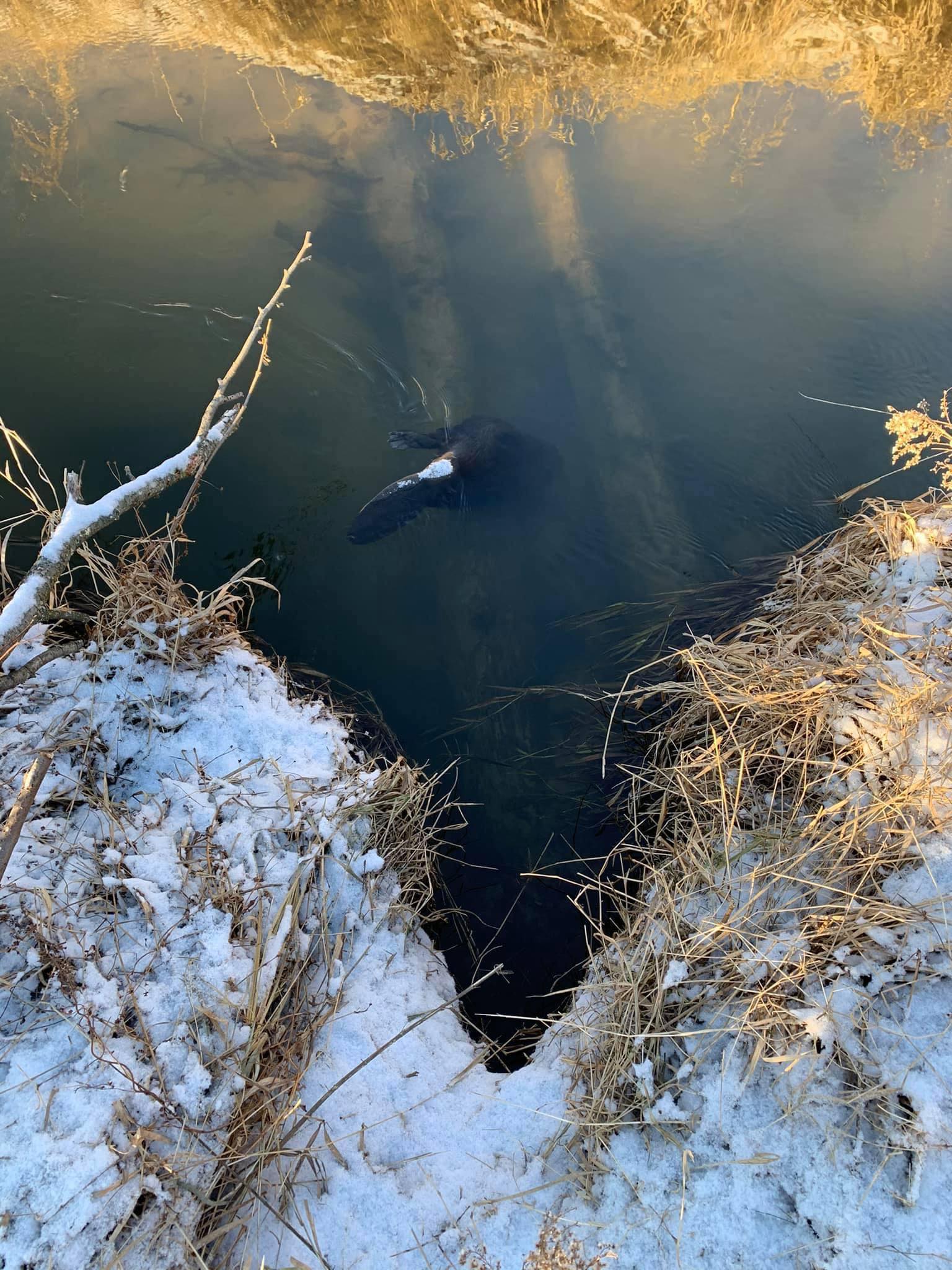
Snares
Some states allow the use of beaver snares as another method of trapping. A snare pole method is most commonly used during the winter months when beavers have exhausted their feed cache and are more easily tricked into taking bait under the ice. Snares are inexpensive and easy to carry, but require a bit more experience to be sure they are set correctly.
More Tools for Beaver Trapping
Additional tools that are helpful when trapping include an ice chisel or ax to chip through thick ice in the winter, a piece of flexible PVC rod to help feel for runs and dens underwater, and a sled or pack basket to carry everything, including your caught beaver.
Making Sets for Beaver Trapping
We’ve mentioned a few examples of sets that you could make, but let’s talk about a few additional methods.
Castor Mound Set
A castor mound set is a great way to catch beavers that may be “square shy” or hesitant to go through a body grip trap. You can use a castor mound that is already established, or create your own using mud and fresh beaver castor lure. Bed a foothold trap underwater just in front of the castor mound where the beaver will place its foot from the water to investigate the new scent, which is a territorial response in the spring.
Dam Break Set
A dam break set is extremely effective, but be sure to check your local laws and regulations with regards to molesting a beaver dam, as some states do not allow you to tamper with the dam. Other states require that you stay a certain distance away from an active beaver dam.
If your state allows you to set traps on dams, you can remove a few sticks and mud in a small spot to allow some water to trickle through—just enough to make the stagnant water start running. Then place a foothold trap somewhere at the entrance to that opening. The sound of running water and the sense that levels are dropping will make this set irresistible to a beaver, which will attempt to repair the damage in the dam and get caught. Be aware, however, that fellow beavers will often repair the dam right over the caught beaver if it’s in their way, which can be a real hassle as you attempt to retrieve your catch.
Other Sets

If the body of water is narrow enough, like a feeder creek or stream, you could put a 330 body grip trap right in the current and block the water so that the only way to travel is through the trap. This is called a blind set and works well for picking up additional beavers traveling to and from other sets. Baited sets are more common in the winter and they are made by tying a bundle of fresh green sticks together for bait and attaching them either to a snare pole, the trigger of a body grip, or as eye appeal on a castor mound.
Trapping in Open Water
My friend Joseph Biebert from Wisconsin has been on trapping private and public land in several states and he has some good advice for open water trapping. These are a few of his tips:
- Boats are ideal when navigating open water, especially larger river systems or lake chains. A boat will hold plenty of traps and gear, along with all the beavers you can catch.
- Walk along river banks and use a long PVC pole to feel underwater for beaver bank dens and runs that cut up under the bank. Beavers often live in stagnant water with a soft bottom, and their runs will usually be one to two feet deeper than the river bottom. Feel for the edges with the PVC, then mark each edge with sticks. That way, you can place your trap at the bottom and line it up with the run.
- In the fall, beaver begin stockpiling food, and you can often find where they are traveling deeper into the woods to cut branches. Setting your traps in runs where they come up on shore is ideal.
- When trapping under the ice during the winter months, always carry a spud bar or ice chisel with you to check the ice as you go. Ice will be thinner where there is an active beaver run; sometimes there will just be a skim of ice over the top. This helps when placing traps, but it’s also very important for safety reasons. Always test the ice prior to walking on it to lower the risk of falling through.
- Beavers will leave a bubble trail as they swim through their runs under the ice. If it’s clear enough and there’s no snow, you’ll see the obvious path of bubbles indicating exactly where to put your body grip trap.
- Most states do not require traps under the ice to be checked daily, so you can leave the sets for multiple days without chiseling.
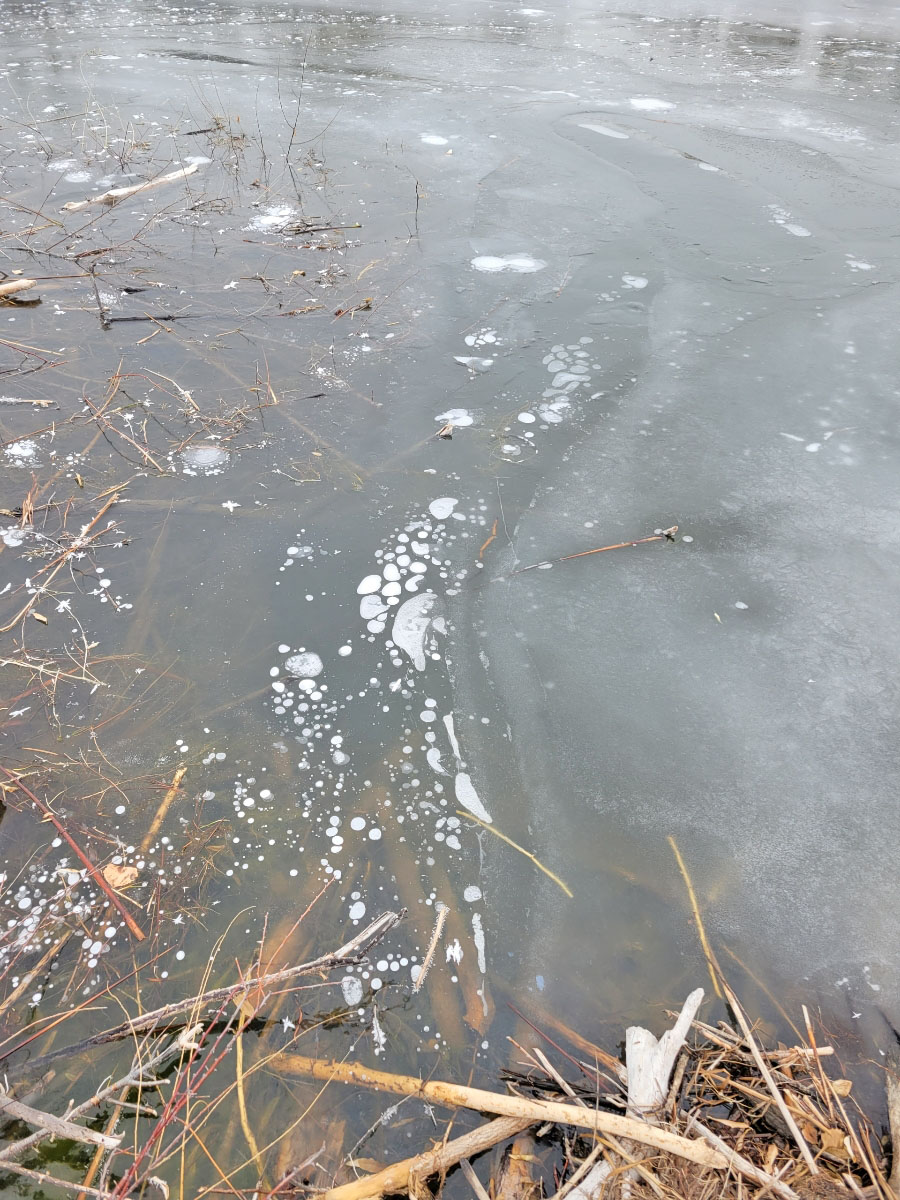
Trapping Otters
One thing that trappers, and especially hobby trappers, need to know about beaver trapping is that you could also catch an otter. There are theories on how to avoid catching river otters, but they’re so curious that it’s difficult to avoid completely. Otters like to use beaver runs, explore lodges, travel along dams, and check out castor mounds, which means they’ll often run into beaver traps by accident.
Regulations on otter trapping differ by state. Some states allow you to harvest otters. Others, like Wisconsin, only allow a certain number of otters to be trapped. It’s best to contact your local game warden before setting traps for beavers so you know the protocol for turning in otters that are caught incidentally.
What to Do with Beaver Fur
After trapping a beaver, it’s important to utilize as much of the animal as possible. This nation was founded, in part, on beaver fur. Today, beaver fur continues to be a versatile, waterproof fur. Unlike many dry-land furbearers, beaver fur tends to remain healthy and usable year-round. Prime winter beavers are the most sought after, however.
Beavers are skinned up the belly in what’s called an open style, and pelts can be sold at auction or tanned to keep. Tanned furs can be sewn into hats, gloves, vests, and blankets.
The waterproof fur and durable leather make beaver pelts the ideal fur to use for mittens and gloves. Cowboy hats have recently made a comeback and beaver fur is often used for felt. Beaver pelts can also be placed on a willow hoop to hang for wall decor, or hung over a chair for that added mountain man interior design.
Beavers have additional resources that we can benefit from, including castor and meat. In 2022, dried beaver castor sold for over $100 per pound at the Fur Harvesters Auction, while pelts only averaged around $11 each. The castors are located under the skin near the vent, and are most full in the spring when breeding season is on. Castors can also be sold to lure makers, as castor is used in many different lures for trapping bobcats and other animals.
READ NEXT: How to Trap Coyotes
Beaver meat is a less appreciated delicacy. It’s a red meat that is similar to beef, and it’s easily harvested after the beaver is skinned and the castor and oil sacs are removed. Beaver meat consists of the backstraps and the hindquarters. Many trappers use beaver meat in any recipe that calls for beef, including meatloaf, meatballs, and chili.
I have a friend who went through a terrible divorce many years ago. He told me that he continued to work as a nuisance trapper that fall and winter of his divorce, and funded and fed himself almost entirely on beaver meat and castors. Beaver meat is also high in protein when feeding dogs on a raw diet. Carcasses can also be used to catch more animals, including fisher and bobcats, as beaver is one of the most irresistible baits for many predators.
Final Thoughts on Beaver Trapping
I hope that as a reader, you don’t feel overwhelmed by all the different ways to trap beaver. Instead, I hope you feel a sense of excitement as you attempt to pursue a very important furbearer in this nation’s history. Hard work always pays off, and beaver trapping is nothing short of hard work. Embrace the challenge and fun that comes with trapping these incredible critters.
